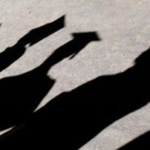Kids Are Expensive
Last year, the US Department of Agriculture released the 2015 Expenditures on Children by Families Report with the scary title: “The Cost of Raising a Child.” The Report, first issued in 1960, was developed by economists at USDA’s Center for Nutrition Policy and Promotion, and estimated that for a child born in 2015, a middle-income, married-couple family will spend between $12,350 and $13,900 annually – or $233,610 from birth through age 17 – on child-raising expenses.
The Report details spending as follows:
· Housing 29%
· Food 18%
· Childcare 16%
· Transportation 15%
· Health Care 9%
· Clothing 6%
The Report states that child-raising costs can vary greatly based on where you live and on the number and ages of children in a household. For example, housing costs are greater in the urban Northeast, urban West and urban South, while lower in the urban Midwest and rural areas. And as family size increases, costs per child generally decrease. But the Report makes it abundantly clear – raising children is expensive no matter where you live.
Here is the United States Department of Agriculture’s: COST OF RAISING A CHILD CALCULATOR. Based on the site’s calculations, I can expect to shell out north of $26,000 for the first year. As a financial planner, I had to investigate further.
You can do it for Less.
Let’s break down some of the most essential items, and see how cost can be minimized as much as possible (not including housing, transportation, etc. which can vary greatly).
Bassinet/Crib:
My advice is to source second-hand (make sure to check for recalls and safety standards), or buy a more budget version (think Ikea). An infant is usually in a bassinet for a few months, then outgrows it. Your child may not like to sleep in that fancy $1000 crib. Maybe you’ll co-sleep. A lot can happen.
What I spent: $300 bassinet/convertible pack ’n play + $100 toddler convertible crib + $250 mattress & sheets
Food:
Separate from any other issues, obviously breast milk is free, so it’s the most economical approach. Even if you have to supplement, any breastmilk you supply would cut down on the cost of formula, which can run anywhere from $25-45 a tub.
Once you’re ready to move on to solids, make batches of baby food and freeze it. Although those ready-to-eat pouches are convenient and relatively cheap, they still add up. Making batches of pureed veggies/fruits hardly costs anything on a per-feed basis.
What I spent: $300 formula + $1,250 solid food
Breast pump:
Your insurance company should cover this, so make sure you take advantage. If not, ask family/friends. After they use it, it often sits unused. You’d just need to buy new parts to make it workable for you.
What I spent: $0
Baby bottles/Feeding equipment & accessories:
You don’t need a thousand baby bottles. Also, it often takes a few tries with different brands/types before you find what works for you and your baby, so don’t invest in a lot at first. That way you can figure out what works best before investing in more. Also, you can own fewer bottles (spoons, sippy cups, bibs etc.), and just wash them more often, which is best anyway.
What I spent: $150-$200
Diapers & Wipes:
Don’t discount the discount brands! Often they do just fine. Also, buy in bulk, or try a subscription service. Check the cost/diaper to assess deals.
What I spent: $600 diapers + $200 wipes
Stroller/Car seat:
The lure of the designer stroller/car seat is strong, but there are many that are more than functional and attractive at more reasonable costs. Besides, an infant car seat will need to be upgraded soon to a regular one, and your toddler will want to walk more than be in a stroller, so it really gets the most use in year one.
What I spent: $1,100 for stroller/carseat travel combo (biggest splurge)
Clothing:
Since everything is outgrown in a few months, always get a bigger size so you can wear it longer. Join your local swap & sell group if possible to source gently worn clothes.
What I spent: $300-$400
Toys:
There is nothing wrong with second-hand toys and often, babies aren’t even interested in them, or take notice for about 15 min. As mentioned, buy second hand or swap as much as you can. And don’t forget, sometimes everyday items around your house that are baby/toddler safe (like spatulas, cardboard boxes) can be just as entertaining!
What I spent: $50
Luckily, my wife and I managed to spend between $4600-4750. The overall theme is to buy less, and do what you can with second-hand/gently used goods. Most baby items are for specific stages which last only a few months. While some of these approaches may take a bit more planning and time, there can be meaningful savings at the end.
The Importance of Financial Planning
For those who are thinking about starting a family, the cost of raising children is just one of dozens of financial topics that requires equal amount of attention alongside mainstream topics such as budgeting, debt management, and investment planning.
Don’t hesitate to seek out a proficient planner to help map things out.
And before I forget, I would like to thank my wife, Jen, for contributing to this article.







